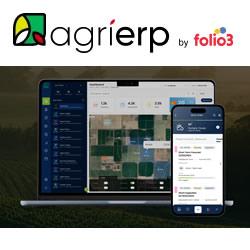What Roles Will AI And Machine Learning Have In Feeding The World?
#1 Article for 2018 - Growing with Hydroponics, Aeroponics and Aquaponics
Top Article for 2018 - Automating Agriculture: How Automation and Robotics Have Taken to the Fields
Top Article for 2018 - Effects of Extreme Weather on Farming
What if Your Fertilizer Is Not Working as Expected?
The Growth of Vertical Farms: A Case Study
Agriculture Workforce Automation and Robots
Will Robots be the Future of Farming?
Indoor Farming with Bowery Farming
The Next Generation Greenhouse
Artificial Intelligence And Machine Learning In Agriculture Today
Feeding a Growing Population: Why Technology Matters
The Dawn of Digital Farming
Pistachio and Almond Grower Invests in Solar for a Harvest of Savings
Plant Breeders Tap Robots, Drones and AI to Feed the World
Records 706 to 720 of 896
First | Previous | Next | Last
Featured Product

